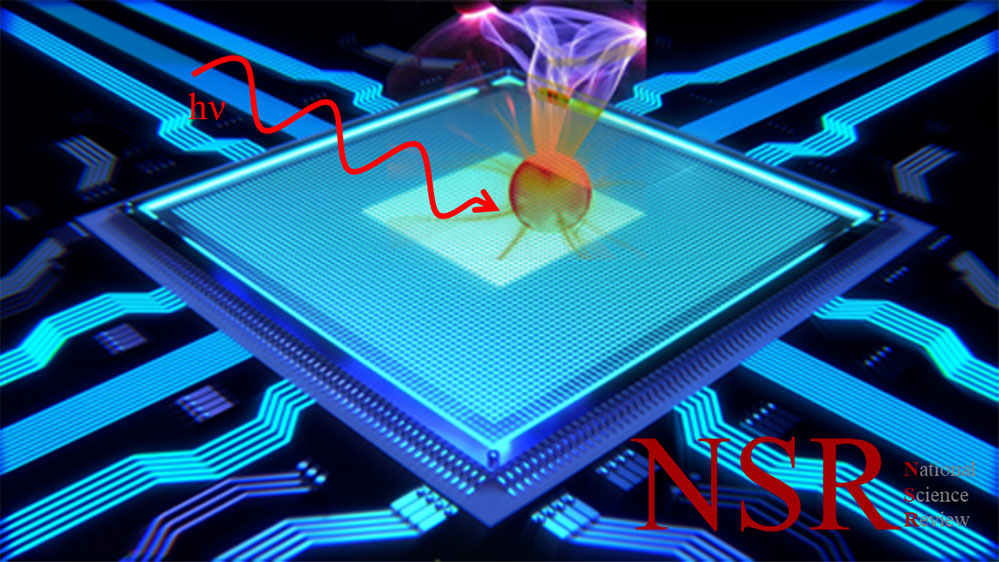Quantum relaxation time (τ) is one of the most important physical properties affecting critical electron transport parameters in advanced materials, such as electrical conductivity and carrier mobility in metals and semiconductors.
Characterizing the quantum relaxation time of conducting electrons and clarifying the mechanism of different interactions are of great significance for a better understanding of the frontier issues of condensed matter physics, as well as the design and preparation of next-generation electronic devices. Conventionally, τ can only be determined indirectly under a static field by the equation: τ = μm*/e. While the carrier mobility (μ) is identified by the joint measurements of DC conductivity and Hall effect using electrical-contact methods, the effective mass (m*) is obtained by the magnetic oscillations experiment under ultra-high magnetic field and low temperature. However, the direct measurement of quantum relaxation time has been elusive for a century.

Recently, Chair Professor X-D Xiang and his research team collaborating with Shanghai Jiaotong University and the University of Science and Technology in China have published a paper entitled “A Direct Measurement Method of Quantum Relaxation Time,” in National Science Review (IF = 16.7). The Team solved a century-old problem by presenting an entirely new electron scattering mechanism-inelastic scattering of bound electrons at non-zero frequencies and the original, innovative theoretical model and method to extract quantum relaxation time from the full-width at half maximum (FWHM) of plasma resonance peaks of different materials.
In 1900, the Drude model describing the oscillation of electrons under light provided the theoretical basis for the measurement of quantum relaxation time via a far-field light probe. However, there exists a large deviation between experimental data and the model, and the quantum relaxation time of materials cannot be determined directly by the Drude model.
In traditional condensed matter physics, the quantum relaxation time is affected by three scattering mechanisms: electron-electron, electron-phonon, and electron-impurity. The new measuring method, proposed by the Team, accounts for both contributions of conduction (Drude term) and bound electrons to determine frequency-dependent quantum relaxation times.
With the careful analysis of experimental data, all the results prove that a new bound-electron scattering plays a dominant role in quantum relaxation time at optical frequencies. For the first time, scientists have realized the bound electron contribution to conduction electrons’ quantum relaxation time.
The pioneer work of combinatorial materials chip (X.-D. Xiang et al., Science, 268, 1738:1995) was invented by Dr. Xiang in the 1990s on high-throughput preparation and characterization, lays the foundation for the Materials Genome Project. However, non-destructive, in-situ, high-spatial resolution and high-speed characterization techniques for high-throughput experiments have been lacking. This research also breaks through the bottleneck of high-throughput electrical characterization and lays the foundation for the characterization of thermal, magnetic, and mechanical properties of materials. The new method will elevate materials science into a new age of AI-based “Fourth Paradigm.”
This research work has been supported by the National Key Project of Research and Development Plan and High-level Special Funds. The Center for Computational Science and Engineering at SUSTech supported the computational needs of the research. The contributors include Dr. Peng Zhang, Dr. Haoqi Tang, and Dr. Chuanchuan Gu (SUSTech, Materials Science and Engineering), Professor X-D Xiang (SUSTech, Materials Science and Engineering & Department of Physics) and Hong Wang (Shanghai Jiaotong University), Assistant Professor Guangfu Luo (SUSTech, Materials Science and Engineering), and Professor Yalin Lu (University of Science and Technology in China).
Link to the paper: https://doi.org/10.1093/nsr/nwaa242






